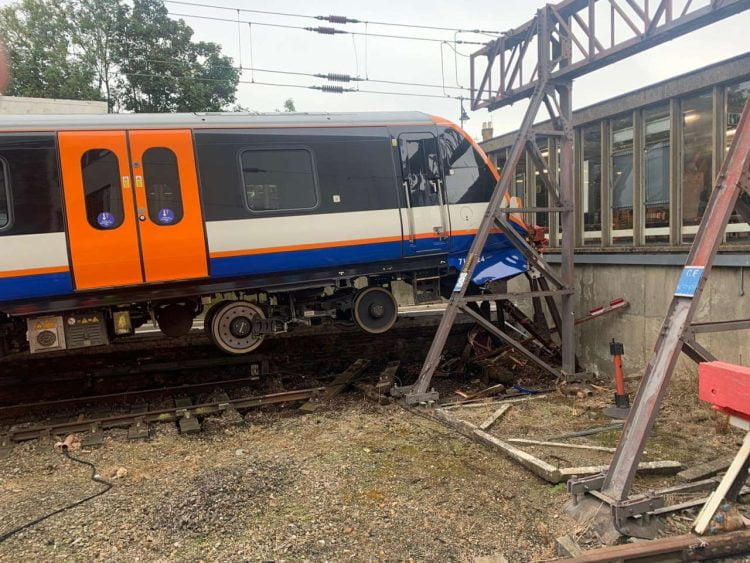Rail Accident Investigation Branch has released its report regarding a buffer-stop collision which took place at Enfield Town station on Tuesday the 12 of October at 08.21 hours.
The buffer stop was damaged in the collision as the train rode up on it before coming to rest with its leading wheels some 800mm over the rails. The incident saw no serious injuries take place.
The train was travelling at 10mph at 69 metres from the buffer-stop and after the driver applied the brakes, made no further control actions for just over seven seconds prior to making an emergency brake application short of the buffer stop, which was too late to stop the collision.
The report has revealed that the accident took place due to the driver not applying brakes in time as he lost awareness of his driving task, which was possibly due to him being substantially fatigued. Following the accident, drug and alcohol tests took place for the driver, which provided a positive result for a recreational drug.

As the driver signed on for duty, he did not report his fatigue levels to his employer, who also had not identified his fatigue or that his personal circumstances made him a candidate for fatigue.
The driver had not reported his fatigue to his employer, who, in turn, had not identified his fatigue when he signed on duty, or that his personal circumstances made him at risk of fatigue. A possible conflict was also identified between the employer's processes for making sure staff attend for duty and management of staff fatigue were also identified.
Engineered systems which automatically apply train brakes were in use due to the conditions required for their use not being met. This includes the Train Protection and Warning System, which was not activated due to the train's low travel speeds at the time of heading towards the buffer stop.
Rail Accident Investigation Branch's report makes two recommendations as follows:
- The first recommendation was for ARL and is regarding the encouragement of staff to report fatigue which may impact their ability to carry out their job safely.
- The second recommendation was for Network Rail and also RSSB and aims to enhance the risk assessment process regarding buffer stops and terminal platform collisions.
Three learning points were also raised in the report, these are as follows:
- Network Rail and train operating companies are reminded that engineered safeguards do not protect against all eventualities. Operations controls may also be needed to manage risk.
- Train staff are reminded that reporting fatigue is crucial as it impacts their ability to work safely.
- Staff members are reminded that they need to comply with their employer's drug and alcohol policies.
Paul Hutchings, managing director at Arriva Rail London, said: “We take the safety of our customers and colleagues incredibly seriously and provided every assistance to the Rail Accident Investigation Branch (RAIB) during its investigation. We have a zero-tolerance policy for drugs and alcohol, which exceeds industry standards, and the driver involved was immediately suspended following the incident and subsequently dismissed after returning a positive test result.
“While our robust fatigue and lifestyle management procedures have always met industry standards, we recognise the recommendations made by RAIB and have already made enhancements. We are committed to continuously improving our approach to managing fatigue and will work closely with the wider industry as we do so.”
Obviously the train driver was under the influence of drugs at the time of the derailment at Enfield Town. How did he manage to drive a train whilst he was so high on drugs and wasn’t stopped and put out of work and would of been fired. Then the accident wouldn’t of taken place.
The article does not state that the driver was under the influence while on duty. It states that his drugs sample returned a positive result AFTER the incident took place. So the positive result was an after-effect of use, but nobody would have suspected it when he clocked on, because drug traces can stay in the system for days or even weeks.
Still he shouldn’t have been driving the train in the first place. If he was suffering from fatigue which can happen to many train drivers.
Some drivers can brake with a uniform brake application, and others with the on / off style.
Bay platforms should be treated as low rail adhesion zones all the time. That would dictate braking at 3 percent g from around 40 m if the speed is 10 mph; allowing 1.5 seconds build up/inertia. The drugs and sleepless night is of course the main causal factor.
Train entered platform at 10mph and hit buffer stop at 77mph? That surely does not make sense!
The speeds are 10mph and 7.7mph